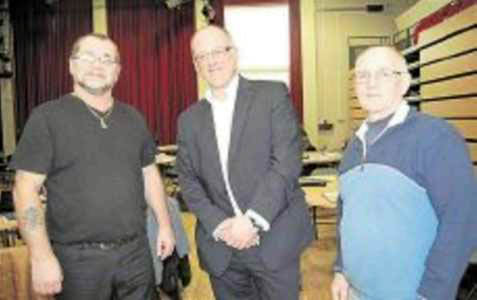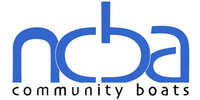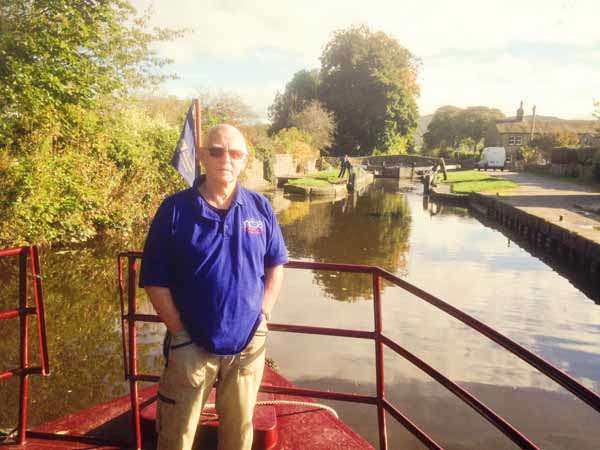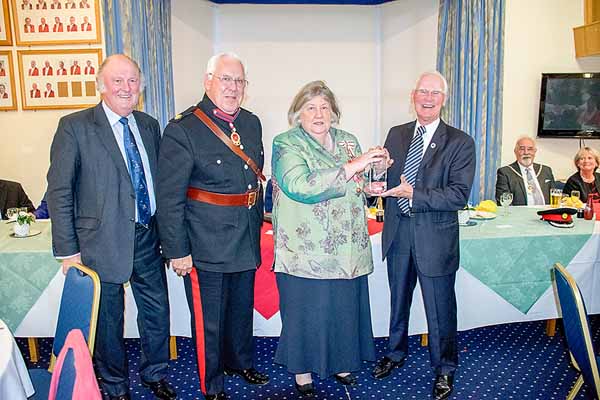Janet Richardson reports from the National Community Boating Association AGM and conference.
Welcoming delegates from community associations around the canal and river network, chairman Derek Stansfield, referred to the diversity of provision in the various regions, several of the projects having been showcased in Ton/path Talk. Presenting his report, which was outlined in his column in the April edition, Derek said a result of the recent meeting with Canal & River Trust chief executive, Richard Parry, was that NCBA now has a position on the CRT User Group.
“The contentious issue of licensing of community boats was broached and it was agreed that dialogue on this between the CRT and the NCBA should continue.” It was particularly pleasing to see that CRT property director, Stuart Mills, would be delivering the keynote speech to the conference.
“Another of the outcomes was an agreement to work closer together particularly on the issue of volunteering and we look forward to Cassie Weaver’s presentation,” he added.

Keynote speaker Stuart Mills, centre, with NCBA company secretary, Bob Ratcliffe, and outgoing chairman, Derek Stansfield.
A chartered surveyor, Stuart Mills joined the former British Waterways in 1990 after working in the private sector and became property director in 2008. He explained that as well as 2000 miles of waterways, 63 SSSIs and 1000 wildlife conservation areas, as well as thousands of locks, bridges and culverts, the Canal & River Trust now has in its portfolio 2700 listed structures; the highest number after the Church of England and the National Trust.
“Half the population lives within five miles of one of our waterways, the towpaths are free for anyone to use and boating is at record levels after strong growth in the early 2000s.” Stuart also spoke about a growing trend in unpowered boating such as canoeing and other paddle sports and referred to the recent announcement of the coast-to-coast canoe trail following the route of the Leeds & Liverpool and South Yorkshire canals.
Firm foundation
“Our contract with the Government gives us a firm foundation to look ahead long term and reduce reliability on any single source of income,” Stuart continued. After the first three years of Defra’s 15-year grant programme, this rises in 2015-16 to £50 million per annum.
Core waterway conservancy combined with wider public benefit opportunities in line with the charity’s objectives and CRT had been successful in attracting major donors including trusts, corporates such as Marks & Spencer and other funders as well as recruiting 5000 new ‘friends’ in the last year.
Stuart said that waterway spend would rise to £100 million over the next two years including dredging and control of off side vegetation for which an additional £2 million was made available in 2014. Winter works had cost around £45 million with 175 stoppages from November to March including 150 gate replacements and 50 gate repairs, more than 20 lock chamber repairs and £1 million in extra works. An expanded open day programme had seen 9000 visitors to the first 15 events.
During the question-and-answer session that followed, Stuart was asked about the licence category for charity boats, which are neither private nor commercial
“There is a charitable discount but it is accepted that we do need to look at this and it will receive some focus over the next 12-18 months,” he replied. “We know we have an issue diat needs taking apart and are not in the business of putting organisations out of business. We need to find solutions and would like to sit down with NCBA and sort out what the issues are.”
Another questioner asked how waterway users could influence how CRT prioritises repairs, restoration and dredging.
“We have a very complex asset management system which inspects assets on a very regular cycle,” Stuart explained. “We develop a programme over a period of time that prioritises projects. It is done nationally – it used to be regionally – which is a far more effective way to make sure we put money in the right place.”
Referring to the 11 waterway partnerships, he said that the waterway managers should be the first port of call and have become ‘front of house’ in customer service. “We love people to be our eyes and ears and there is a focus on delivering better customer service.”
Waterways adoptions
In her presentation Cassie Weaver spoke about CRT’s educational provision through the Canal & River Explorers managed by a very small team of staff with the help of lots of volunteers. Learning resources linked to the national curriculum include trails, waterway safety sessions, ideas for challenges and other activities, volunteer-led visits, downloadable activities, lesson plans, sample visiting plans and risk assessment types.
She also spoke about waterway adoption schemes built on volunteers, which harness their enthusiasm, engage people in their locality and build positive partnerships between the CRT and local communities. Groups are ideally located within five miles, covering approximately a one-mile length of waterway with one monthly activity over one year.
“The benefits of adoptions are to get active, meet new people, have strength in numbers such as for grant applications, learn something new, improve your local area and develop ownerships. We can help maintain a local towpath, fundraise, hold educational events, paint, lead working teams, help combat antisocial behaviour and be involved in planning for the future.”
During a talk on getting the most from social media by ‘virtual assistant’ Corinne Thomsett – a former hotel boat operator – a straw poll of the audience revealed that more than half had a Facebook account
Describing it as a conversation rather than a broadcast, she said that the average Facebook post has a ‘shelf life’ of four hours compared with 18 minutes for a Tweet and advised associations to post between five-10 times a week.
Her top tip? A picture is worth 1000 words – “Never has that been more true than on Facebook.”
Elections were held for the club’s offices and new trustees, results of which were as follows:
chairman Paul Unwin, Chesterfield Canal Trust; vice-chairman Paul Marshall, Camdcn CAN; company secretary Bob Ratcliffe, The Wharf; minute secretary John Embling, ABA; director for quality assurance Patrick Titman, ABA; director of moderations Michael Banyard, CanalAbility; director for finance Lorraine Grainger, Hillingdon; director for social media Roger Nisbet, CanalAbility; director for equality/diversity Derek Hilyer, Beatrice Trust; director for networking Neville Ward, The Wharf; chairman of National Training Committee Derek Stansfield, SCAD; Partnership Representatives for NCBA Derek Stansfield and Bob Ratcliffe; general administration Bob Ratcliffe.


